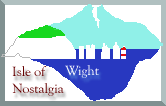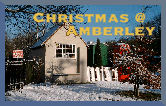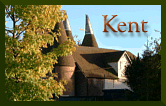
This
These photographs are a bit more specialized than the others elsewhere on this site. They stem from my interest in meteorology, and especially cloud formations. While I am a fan of technology, infra-red satellite imagery, rainfall radar and the rest, clouds are often ignored by the meteorologist. Yet they contain a wealth of information about the atmosphere. Certain rare varieties are incredibly accurate predictors of thunderstorms. Others signify the approach of a warm front; and so it goes on. I have tried to capture the majesty of the skies here but the low contract between clouds and high contrast between clouds and the earth makes photography a challenge; and scanning a nightmare! Anyone wishing to find out more should consult the 'bible' of clouds, the International Cloud Atlas' published by the World Meteorological Organization. It's a bit pricy but well worth it! Comments to dave


This innocuous looking cirrus turned into a major overnight thunderstorm. As a meteorologist and photographer I find clouds interesting and sometimes exciting however I've been informed by a reader of this website that experiencing a traumatic event during a severe thunderstorm or deadly tornado can cause some people to form an irrational fear of clouds - it's known as Nephophobia. There are even mental health facilities that have therapies to treat the panic attacks brought on by Nephophobia. At one such facility, Morningside Recovery, therapists have found that viewing photos of serene clouds on the Morningside Recovery Pinterest website can help sufferers overcome their fears before their panic attacks escalate into a more serious disorder. So even an experienced meteorologist and cloud watcher can learn something new!

























Hope you enjoyed these clouds. Any fellow meteorologists wish to comment on my classifications, please email me at email dave
Richard Hamblyn describes how, two centuries ago, a scientist made some order out of the chaotic skies and started a classification still in use today.
Richard Hamblyn
All you need to learn how to classify cloud types. Published by the UK's Met Office
For the more serious enthusiast - published by the World Meteorological Organization
For the more serious enthusiast - published by the World Meteorological Organization
High white delicate cloud. Cirrus is composed of ice crystals and is always white (except possibly after sunset or before sunrise). It looks great in photographs, makes a nice daytime backdrop and excellent sunsets but is often a sign of a change in the weather.
Small amounts of cirrus are OK but lots of dense cirrus is often a sign of storms to come
None.
Very small, white cloud elements. Sometimes produces a 'mackerel sky' but this is more often formed with altocumulus. Signifies convection in the upper atmosphere - not good.
Real cirrocumulus is a bad sign as there is convection high up - a sign of storms on the way.
none
Thin white cloud, very high in the atmosphere. It can be difficult to see at first - a 'halo' around the sun is often a giveaway. Again all cirrus is composed of small ice crystals.
Not storms this time but an almost certain predictor of a warm front. That's lots of continuous rain in a few hours, but not generally stormy.
none
Medium level convective 'lumps' of cloud. Great for sunset photography. Often forms a 'mackerel sky'.
Convection is never good - altocumulus again means unsettled and possibly stormy weather to come. Varieties of altocumulus, namely floccus and castellanus, are very accurate predictors for thundery activity in a day or two. Altocumulus can form 'sun pillars' - I will try to find a photo example.
Very rare (at least in reaching ground level).
Light grey formless sheet of medium level cloud. The sun will sometimes appear as through ground glass. The loss of the halo signifies altostratus has replaced cirrostratus as the warm front approaches yet nearer.....
Approach of warm front imminent. Get the brolly ready.
Precipitation sometimes in the form of continuous light rain.
Dense grey-blue cloud, without form.
Too late for predictions - sorry.
Heavy continuous rain associated with passing warm front
Low level, almost continuous layer of cloud, but 'lumpy'. Can be formed as cumulus or sometimes cumulonimbus dissipates (usually in the evening).
Normally a dull period. There are different forms of stratocumulus which makes forecasting difficult without a lot of knowledge. It can accompany 'high pressure' in the winter, but instead of weak winter sunshine, can give an extensive cover of cloud for days on end.
Not normally rain - but drizzle sometimes (a word of warning - drizzle relates to the size of droplet). Heavy drizzle (lots of small diameter bits of precipitation) can get you wet on occasion.
Fog and mist are examples of this low level cloud - no form.
Cold if it persists in Winter - Otherwise not a reliable predictor.
None. (but beware - there may be something else above you can't see!).
Low level 'lumpy' cloud.
Small cumulus (with a height to width ratio less than 1:3 is sometimes called 'fair-weather' cumulus. If the ratio starts to exceed 1:2 convection can turn cumulus into cumulonimbus, with thunder etc.
Showers sometimes (but more extensive rainfall in the tropics).
Large towering cloud, often with an 'anvil'. Other characteristics: Thunder, lightning, rainbows.
Time to get indoors
Rain, hail etc.

|

|

|

|

|

|